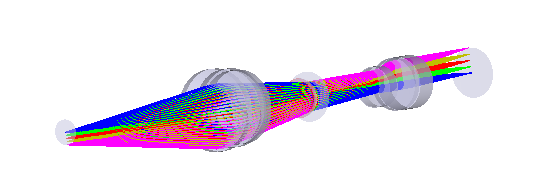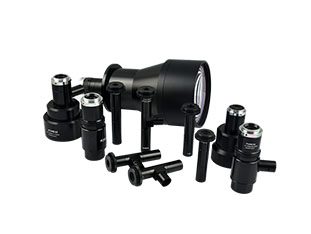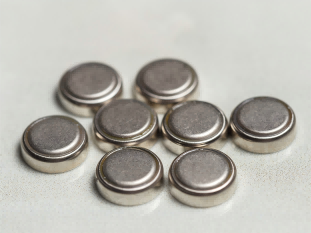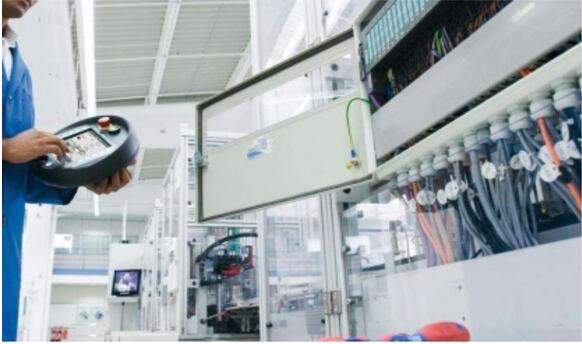
What is a telecentric lens?


A telecentric lens is a type of machine vision lens that primarily corrects the parallax issue of traditional lenses. Its entrance or exit pupil is located at infinity, allowing light to enter the lens in parallel with the optical axis. This enables constant magnification and ultra-low distortion during imaging, ensuring that the image magnification does not change with the distance of the object within a certain object distance range.
Based on their optical imaging methods, they are also divided into three types:Object-side telecentric lens, Image-side telecentric lens, Dual-side telecentric lens.


1. The aperture diaphragm of the object-side telecentric lens is located on the image-side focal plane, and the image height remains unchanged when the object distance changes. It has minimal distortion and is commonly used for precise dimensional measurements in semiconductors or precision mechanical components.
2. The aperture diaphragm of the image-side telecentric lens is located on the object-side focal plane, and the principal rays on the image side are parallel to the optical axis. The unknown offset of the CCD chip does not affect the image size, making it suitable for applications requiring stable image output.
3. The double-sided telecentric lens combines the telecentric optical paths of the above two types, with changes in both object distance and image distance having no effect on the magnification ratio. It features a large depth of field and high measurement accuracy, making it the ideal choice for measurement applications.
How to select a telecentric lens?
①Determine the application scenario.
②Detection accuracy.
③Available lens space.
④Calculate the magnification ratio using the formula: Optical magnification ratio = CCD size / Actual field of view size.
⑤Confirm the depth of field range using the formula: Depth of field = (Working aperture number × Pixel size × Algorithm sensitivity) / (Magnification ratio²).
⑥Target surface and interface.


Question: You need to inspect cylindrical parts with a diameter of 10 mm and a thickness of 2 mm. Which telecentric lens would you choose? Give your answer on the website backend.
Product recommendation
TECHNICAL SOLUTION
MORE+You may also be interested in the following information
FREE CONSULTING SERVICE
Let’s help you to find the right solution for your project!

- APPICATION CASE
- RESOURCE CENTER
- DOWNLOAD CENTER
SOLUTIONS SUPPORT
- ZOOM LENS SELECTION TOOL
- TELECENTRIC LENS SELECTION TOOL
- FA LENS SELECTION TOOL
- ZOOM RATIO TABLE
- CERTIFIED MODEL
SELECTION TOOL
- WHY POMEAS
- FAQ
- PRIVACY POLICY
- TERMS OF USE
- DELIVERY & RETURN POLICY
CUSTOMER CARE
 ADDRESS
ADDRESS
Add.:No.68, Chongwei Road, Baizhoubian, East district, Dongguan, China, 523000
CONTACT
 Tel:+ 86-0769-2266 0867
Tel:+ 86-0769-2266 0867
 Fax:+ 86-0769-2266 0867
Fax:+ 86-0769-2266 0867
 E-mail:marketing@pomeas.com
E-mail:marketing@pomeas.com

Wechat QR code

 ASK POMEAS
ASK POMEAS  PRICE INQUIRY
PRICE INQUIRY  REQUEST DEMO/TEST
REQUEST DEMO/TEST  FREE TRIAL UNIT
FREE TRIAL UNIT  ACCURATE SELECTION
ACCURATE SELECTION 